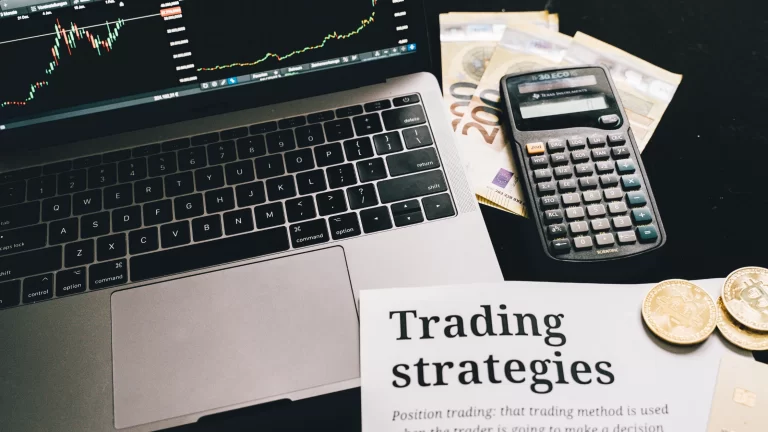AI Trading Bots for Decentralized Finance

Decentralized Finance has rapidly emerged as one of the most transformative innovations in the financial industry, offering a decentralized and open alternative to traditional financial systems. Unlike conventional markets, DeFi operates on blockchain technology, allowing for trustless transactions, permissionless access, and automated financial services through smart contracts. However, with these benefits come unique challenges and opportunities for traders, especially those leveraging AI trading bots. This article explores how AI trading bots can be adapted to navigate the complexities of DeFi markets, unlocking new possibilities for automated trading strategies.

Understanding DeFi Markets
Decentralized Finance refers to a financial ecosystem that operates on blockchain networks, primarily Ethereum, but also on others like Binance Smart Chain, Solana, and Avalanche. In DeFi, financial services such as lending, borrowing, trading, and earning interest are executed through smart contracts, which are self-executing agreements coded on the blockchain.
Key Characteristics of DeFi Markets:
- Decentralization: No central authority or intermediary controls the market.
- Transparency: All transactions are recorded on a public blockchain, making them transparent and immutable.
- Liquidity Pools: DeFi platforms often rely on liquidity pools, where users provide liquidity in exchange for rewards, enabling trading without the need for a traditional order book.
- Yield Farming: Users can earn rewards by participating in various DeFi protocols, often involving complex strategies that AI can optimize.
Unique Challenges in DeFi for AI Trading Bots
Adapting AI trading bots to DeFi markets requires addressing several unique challenges:
- Smart Contract Risks
- Market Fragmentation
- Slippage and Impermanent Loss
- High Transaction Costs (Gas Fees)
- Security and Regulatory Concerns
Smart Contract Risks
Challenge: DeFi platforms operate on smart contracts, which can be vulnerable to bugs, exploits, or hacks. Unlike centralized exchanges, where users may have some recourse in case of a failure, losses on DeFi platforms are often irreversible.
Adaptation: AI bots must be programmed to assess the security and reliability of smart contracts before engaging in transactions. This can involve analyzing the contract’s code, checking for audits, and monitoring the protocol for any suspicious activity.
Market Fragmentation
Challenge: The DeFi ecosystem is highly fragmented, with hundreds of platforms offering various services. This fragmentation makes it challenging to aggregate liquidity and execute trades efficiently.
Adaptation: AI trading bots can be designed to interact with multiple DeFi platforms simultaneously. This involves integrating with decentralized exchanges (DEXs), liquidity pools, and yield farming platforms, and using algorithms to find the best prices and opportunities across different protocols.
Slippage and Impermanent Loss
Challenge: Slippage occurs when the execution price differs from the expected price due to a lack of liquidity. Impermanent loss is a risk specific to liquidity providers in DeFi, where the value of deposited assets changes relative to holding them.
Adaptation: AI bots must account for slippage by calculating the impact of their trades on the market and adjusting orders accordingly. For impermanent loss, bots can monitor the price movements of the assets in the liquidity pool and dynamically adjust their positions or withdraw liquidity when necessary.
High Transaction Costs (Gas Fees)
Challenge: On networks like Ethereum, transaction costs (gas fees) can be prohibitively high, especially during periods of network congestion. These fees can significantly eat into the profits of small trades.
Adaptation: AI bots should be programmed to optimize for gas efficiency by timing transactions during periods of lower network activity or using layer-2 scaling solutions that offer reduced fees. Additionally, bots can prioritize high-value trades to ensure that the potential profits outweigh the transaction costs.
Security and Regulatory Concerns
Challenge: The decentralized nature of DeFi introduces security risks, such as vulnerabilities in smart contracts and the potential for rug pulls (where developers drain the liquidity pool and exit the project). Additionally, the regulatory environment for DeFi is still evolving, creating uncertainty.
Adaptation: AI bots should include security protocols that assess the risk profile of DeFi platforms before executing trades. This can involve checking for code audits, monitoring community activity, and avoiding new or unverified projects. Regarding regulatory concerns, bots should be adaptable to comply with evolving legal frameworks, such as those related to anti-money laundering (AML) and know-your-customer (KYC) requirements.

Opportunities for AI Trading Bots in DeFi
Despite the challenges, DeFi markets offer unique opportunities for AI-driven trading strategies:
- Arbitrage Opportunities
- Yield Optimization
- Automated Market Making
- Flash Loan Exploitation
- Predictive Analytics and Sentiment Analysis
Arbitrage Opportunities
Opportunity: The fragmentation of DeFi markets creates frequent price discrepancies between different platforms, leading to arbitrage opportunities. AI bots can exploit these inefficiencies by buying low on one platform and selling high on another.
Implementation: AI bots can be programmed to monitor multiple DEXs simultaneously, identifying and executing arbitrage opportunities within milliseconds. This requires high-speed execution and the ability to interact with various protocols seamlessly.
Yield Optimization
Opportunity: DeFi platforms offer various yield-generating opportunities, such as staking, yield farming, and liquidity provision. AI bots can optimize these strategies by automatically reallocating assets to the highest-yielding opportunities based on real-time data.
Implementation: Bots can continuously analyze yield rates across platforms, factoring in risks like impermanent loss and gas fees, to optimize the allocation of capital. This can involve moving assets between different pools or staking platforms to maximize returns.
Automated Market Making
Opportunity: AI bots can participate as liquidity providers in automated market maker (AMM) protocols, earning fees by facilitating trades between users. By providing liquidity to pools with high trading volumes, bots can generate steady returns.
Implementation: Bots can dynamically adjust their liquidity provision based on market conditions, optimizing for pools with high fees and low impermanent loss. They can also withdraw liquidity during volatile periods to minimize risks.
Flash Loan Exploitation
Opportunity: Flash loans are a unique DeFi feature that allows users to borrow large amounts of capital without collateral, as long as the loan is repaid within the same transaction. AI bots can use flash loans for arbitrage, collateral swaps, or other complex strategies.
Implementation: Bots can execute flash loan strategies by identifying profitable opportunities within a single transaction, such as arbitraging between different liquidity pools or leveraging the loan to execute multiple trades simultaneously.
Predictive Analytics and Sentiment Analysis
Opportunity: DeFi markets are influenced by a wide range of factors, including social media sentiment, governance votes, and protocol upgrades. AI bots can use predictive analytics to anticipate market movements based on these factors.
Implementation: By integrating natural language processing (NLP) tools, AI bots can analyze sentiment data from social media platforms, news sources, and on-chain governance proposals. This information can then be used to predict market trends and adjust trading strategies accordingly.
Conclusion
AI trading bots are well-suited to navigate the unique challenges and opportunities presented by DeFi markets. By adapting their strategies to account for the risks associated with smart contracts, market fragmentation, and high transaction costs, these bots can effectively operate in decentralized environments. Moreover, the opportunities for arbitrage, yield optimization, and automated market making make DeFi a fertile ground for AI-driven trading strategies.
As DeFi continues to evolve, so too will the tools and techniques used by AI trading bots. By staying ahead of the curve and continuously adapting to new developments, traders can leverage AI to maximize their success in the rapidly growing world of decentralized finance.



